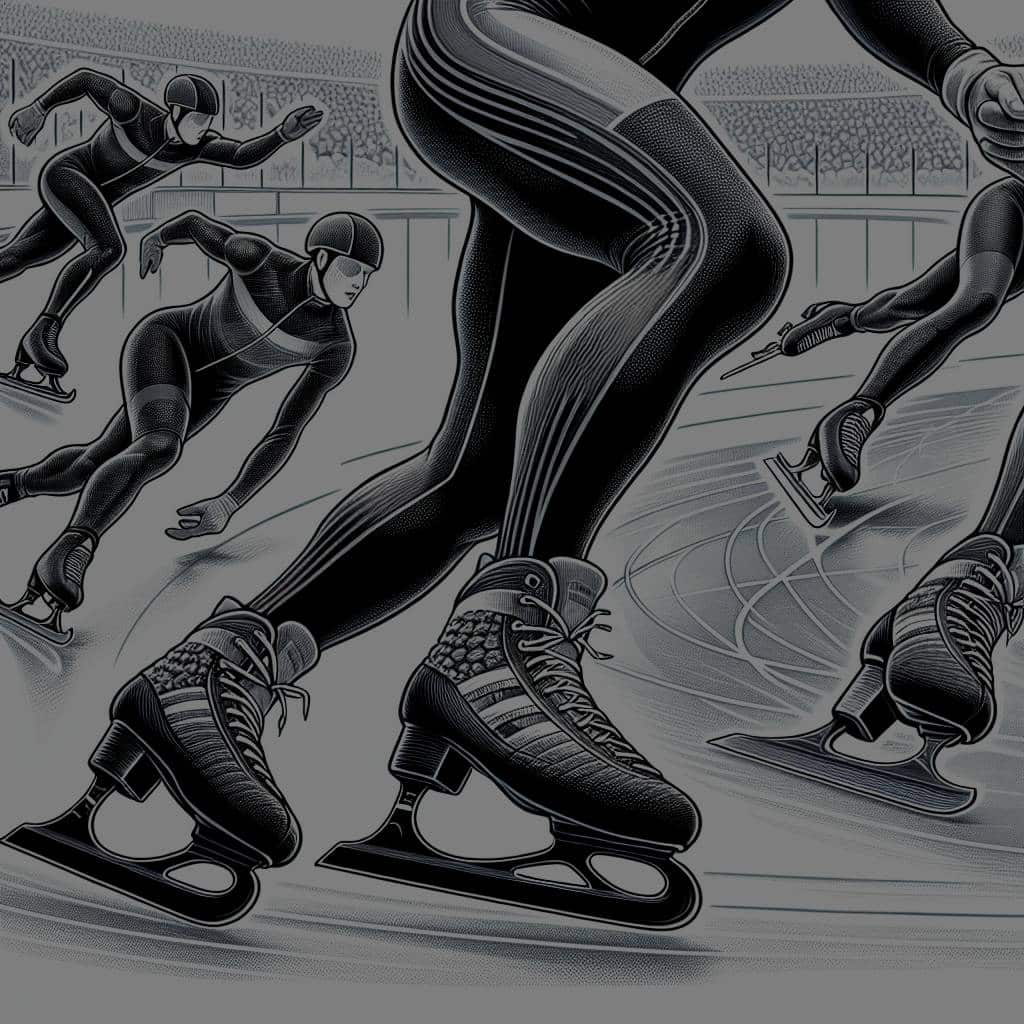Speed skating is a demanding sport that requires a perfect blend of power, technique, and strategy to excel. Among these factors, mastering the corners on the track is crucial to maintaining speed and ultimately winning the race. However, cornering in speed skating requires more than just adept handling of the skate. It involves meticulously perfected techniques, a clear understanding of the physics of force and motion, and an intelligently devised strategy. As modern training methods evolve, so have the techniques for maximizing cornering speed in speed skating. Let’s delve into some of the latest techniques that might prove beneficial for skaters aiming to improve their cornering speed.
Harnessing Power and Force Through Training
Training for speed skating is a comprehensive affair. It involves building power and endurance, improving skating techniques, and understanding the physics of the sport. Training needs to be customized for each skater, taking into consideration their strengths, weaknesses, and specific goals.
Also to discover : What’s the Role of Stabilization Exercises in Preventing Shoulder Injuries in Swimmers?
Your training regimen should include workouts that specifically target the muscles engaged during cornering. Power and force are essential for maintaining speed while skating through corners. Skaters need to develop strong lower body muscles, particularly the quadriceps, hamstrings, and glutes, to produce the force required to push off and accelerate. Core strengthening exercises also play a significant role in maintaining balance and stability during cornering.
High-intensity interval training (HIIT) is an effective way to build both strength and endurance. This type of training involves short, intense bursts of exercise followed by brief recovery periods. It mimics the rhythm of a speed skating race, where skaters have to alternate between periods of intense effort (during the start and corners) and strategic cruising.
In the same genre : How Can Technology Be Used to Track and Improve Recovery in Baseball Pitchers?
Mastering the Cornering Technique
The cornering technique in speed skating is a complex manoeuvre that involves coordinating your body position, the angle of your skate, and the force of your push. To maximize your cornering speed, you need to master the nuances of this technique.
One important aspect of the cornering technique is the cross-under push. This is where the skater pushes off with the inside skate while crossing it under the outside skate. This technique allows the skater to maintain momentum while changing direction. It is essential to keep the pushing foot close to the ice for as long as possible to maximize the force of the push.
Another critical factor is the body position during cornering. Skaters should lean into the turn with their bodies, maintaining a low centre of gravity. This position increases stability and helps to counteract the centrifugal force that tries to push the skater out of the turn.
Strategies for Cornering on Different Track Surfaces
The material of the track can significantly impact the skater’s cornering strategy. Skating on ice requires different techniques and strategies than inline or roller speed skating.
For ice speed skaters, the key is to maintain a steady and controlled glide through the corner. Sudden or jerky movements can cause the skater to lose balance or slip. Ice skaters should also pay attention to the condition of the ice and adjust their cornering strategy accordingly. For example, softer ice might require a more careful and measured approach to cornering.
In contrast, inline skating allows for more aggressive cornering. Inline skaters can take advantage of the grip provided by their wheels to lean further into the corners, generating more speed. However, this requires a high level of skill and control, as over-leaning can cause skaters to lose their balance and fall.
Using Technology to Improve Cornering Speed
Technology plays an increasingly prominent role in speed skating training. Video analysis, biomechanical feedback, and virtual reality tools can offer valuable insights into a skater’s technique, allowing them to make necessary adjustments and improvements.
For example, slow-motion video analysis can help skaters to identify any inefficiencies in their cornering technique. By watching themselves skate in slow motion, skaters can see exactly how their body moves through the corner, how long their skate stays on the ice, and how effectively they are using the cross-under push.
Biomechanical feedback devices can provide real-time data on a skater’s force production, muscle activation, and body position. This data can be incredibly beneficial for identifying areas of weakness and monitoring progress over time.
Virtual reality (VR) tools are a newer addition to the field of speed skating training. They allow skaters to practice different cornering techniques and strategies in a safe and controlled environment. VR can recreate different track conditions and racing situations, providing a comprehensive training tool for skaters.
Modern speed skating is a sport that continues to evolve, with athletes and coaches constantly looking for ways to improve performance. When it comes to cornering speed, the latest techniques involve a blend of targeted physical training, meticulous mastery of technique, intelligent strategy, and innovative use of technology. By harnessing these methods, skaters can continue to push the limits of what’s possible on the track.
Implementing Strategy Tactics for Time Trialing and Relay Racing
In speed skating, the strategies and tactics employed can make a significant difference in the race outcome. This is particularly true when it comes to time trialing and relay racing. Understanding the rules of short track racing and using them to your advantage can enhance your cornering speed and overall performance.
In time trialing, the skater races against the clock, with the goal of achieving the fastest time possible. This requires excellent power endurance to maintain a high speed throughout the race, including the corners. One effective strategy is to focus on transferring power efficiently from the upper body to the skates, particularly during the push-off in the corners.
Understanding track rule changes is also crucial as they can impact the skater’s strategy. For instance, changes in the guidelines for the ideal racing line or permissible cornering techniques can significantly influence a skater’s tactics.
Relay racing, on the other hand, involves teams of skaters. Here, the priority is not only individual speed but also the smoothness of transitions between teammates. During the relay exchange, the outgoing skater needs to transfer their momentum effectively to the incoming skater. This requires precise timing and coordination, especially in the corners where the exchange usually occurs.
In relay races, it’s also important to keep the safety of the child protected, especially when training young athletes. The rules for short track racing often emphasize the skater’s safety, so it’s vital to incorporate these rules into the team’s strategy.
Enhancing Core Strength for Endurance on the Straightaway
The straightaway sections of the track also present an opportunity to maximize speed skating performance. Building specific strength and power in the upper body and core can improve endurance on the straightaway, enabling skaters to maintain a high speed leading into the corners.
Core strength is particularly essential for stability and balance. A strong core helps skaters maintain an upright position on the straightaway and helps them lean into the turns without losing balance. Exercises such as planks, Russian twists, and stability ball workouts can enhance core strength.
To build strength and power, weightlifting exercises targeting the upper body can be beneficial. These exercises can help skaters produce more force during the push-off and maintain a strong and steady glide on the straightaway.
Moreover, specific strength training for the arms and shoulders can assist in the powerful arm swings that contribute to maintaining momentum, especially when coming out of corners. This can be a decisive factor in maintaining high speed throughout the race.
In Conclusion
Speed skating is a dynamic and complex sport that requires a combination of physical strength, technical skill, and strategic acumen. For athletes seeking to improve their cornering speed, harnessing power and force through training, mastering the cornering technique, implementing strategy tactics for time trialing and relay racing, and enhancing core strength for endurance on the straightaway are all crucial.
Understanding the effect of track surfaces on cornering and utilizing technology for training can also offer significant advantages. Skaters should always be mindful of any track rule changes and ensure that safety is prioritized, especially when training young athletes.
The world of speed skating is continually evolving, with new techniques and training methods emerging regularly. However, the core principles remain the same: power, technique, and strategy are the keys to maximizing cornering speed and achieving success in speed skating.






